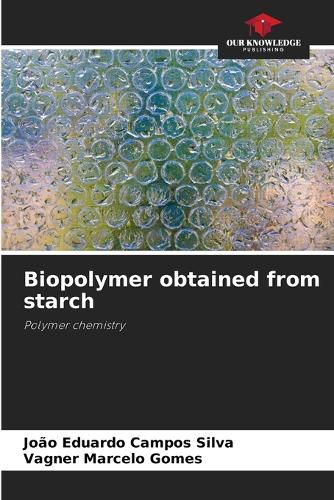Readings Newsletter
Become a Readings Member to make your shopping experience even easier.
Sign in or sign up for free!
You’re not far away from qualifying for FREE standard shipping within Australia
You’ve qualified for FREE standard shipping within Australia
The cart is loading…






This title is printed to order. This book may have been self-published. If so, we cannot guarantee the quality of the content. In the main most books will have gone through the editing process however some may not. We therefore suggest that you be aware of this before ordering this book. If in doubt check either the author or publisher’s details as we are unable to accept any returns unless they are faulty. Please contact us if you have any questions.
Polymers are responsible for a large part of environmental degradation because they are derived from petroleum, i.e. they are non-renewable sources and take hundreds of years to decompose. The general objective of this work is to produce a biopolymer from cassava starch, and the specific objectives are to extract the starch from cassava, promote the acid hydrolysis of the starch using 0.1M hydrochloric acid, develop the biopolymer and analyze the decomposition time of this biopolymer. To extract this starch, a number of unit operations were carried out during the extraction process, the main ones being crushing, straining, decanting and drying the starch, which was then weighed into 5 grams and heated together with water, during this heating, 6 ml of 0.1M hydrochloric acid was added in order to promote the acid hydrolysis (breakdown) of the starch, and in order for this biopolymer to acquire a more malleable form, it is necessary to add a plasticizing agent, to which 4 ml of glycerol (glycerin) was added.
$9.00 standard shipping within Australia
FREE standard shipping within Australia for orders over $100.00
Express & International shipping calculated at checkout
This title is printed to order. This book may have been self-published. If so, we cannot guarantee the quality of the content. In the main most books will have gone through the editing process however some may not. We therefore suggest that you be aware of this before ordering this book. If in doubt check either the author or publisher’s details as we are unable to accept any returns unless they are faulty. Please contact us if you have any questions.
Polymers are responsible for a large part of environmental degradation because they are derived from petroleum, i.e. they are non-renewable sources and take hundreds of years to decompose. The general objective of this work is to produce a biopolymer from cassava starch, and the specific objectives are to extract the starch from cassava, promote the acid hydrolysis of the starch using 0.1M hydrochloric acid, develop the biopolymer and analyze the decomposition time of this biopolymer. To extract this starch, a number of unit operations were carried out during the extraction process, the main ones being crushing, straining, decanting and drying the starch, which was then weighed into 5 grams and heated together with water, during this heating, 6 ml of 0.1M hydrochloric acid was added in order to promote the acid hydrolysis (breakdown) of the starch, and in order for this biopolymer to acquire a more malleable form, it is necessary to add a plasticizing agent, to which 4 ml of glycerol (glycerin) was added.